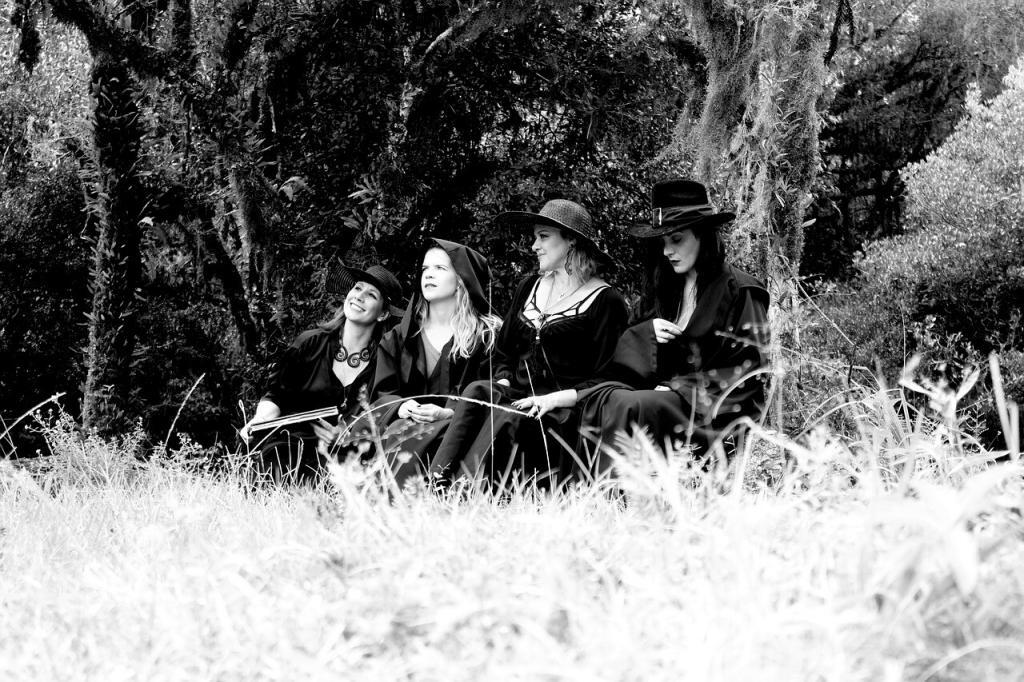Blog
Why did we dump our Ancient Traditions to follow just one God?
As more and more people move away from modern religions, and learn more about our ancient pagan roots, the questions are asked on why we stopped following our ancient ways. In our junior school education, we all learned civilizations around the world contained multiple Gods and Goddesses. These societies functioned with success and were thriving for thousands of years. Then, quite dramatically, things changed.

Mother Shipton 16th- century woodcut
Around 2,019 years ago, in Palestine, Christianity was born. Like those who followed the Jewish faith, Christians believed in one god.
The main difference between the two faiths being that while many Jews came to believe that Jesus Christ was a prophet, followers of Christ believed that he was the son of God and part of the ‘Holy Trinity’ a triad made up of God the Father, God the Son and God the Holy Ghost. Christians believed that the way to communicate with God was through Jesus Christ.
The Christian faith spread from Palestine, eastwards into Europe and in AD 317, the Emperor Constantine declared it to be the official religion of the Roman Empire.
All over Europe old gods were banished and the new religion imposed in their place. Followers of the old ways persisted with their traditions, despite the fact that it was not uncommon for the priests, including the Druids, to whom people looked for spiritual leadership, to be persecuted and in some cases put to death.
Two hundred years later, Pope Gregory I (540-604) did a great deal to consolidate the power of the Catholic faith. Tens of thousands of people were baptized into it, forswearing their old ways and giving themselves to Rome. Gregory was cunning. He realized that people are unwilling to change their ways. He saw that they would continue to gather to honour the one god in places where they, and their fathers, and their fathers before them had gathered to worship the old gods and perform the rituals and ceremonies attendant with traditional worship. So wherever it was possible, he decreed that churches be built on the sites of existing pagan temples.
In any organization, the larger it grows, the more difficult it becomes to control. So it was with the Catholic Church. Centralized in Rome but spreading north to Britain, west into present-day Spain and Portugal and east into Greece, it was hard for the Pope in the Vatican to stop variations in doctrine and ritual creeping in. To discourage this, inquisitors were employed to search out Christians whose beliefs and practices were not in line with official dogma. Anyone who did not follow the true path was branded heretic and if they did not immediately recant when the accusation had been made, were imprisoned and in some cases put to death.
In 1484, Pope Innocent VIII issued a papal bull concerning the practice of witchcraft. Due to the help of newer document publishing machines, the papal bull spread fast and was read by many people.
Innocent’s bull encouraged two monks, Heinrich Kramer and Jakob Sprenger to publish the Malleus Malleficarum, or Witche’s Hammer, which was essentially a witch-hunter’s manual. It explained why witchcraft was such a terrible thing, why it was the duty of all good Catholics to stamp it out and how to tell if someone was practising the black arts.
In their rant against witchcraft, Kramer and Sprenger, who were inquisitors themselves, list the types of witch. They accused witches of having sexual relationships with the Devil and working with him to spread his dark ways.

The book led to thousands of men and women being accused of witchcraft all over Europe and, later, European colonies in the New World. These type of trials happened well into the 1600s, most famously, the Salem Witchcraft Trials.
With the gradual emergence of scientific thinking in the 18th century and the emergence of rational thinking in Europe, witchcraft became widely seen as little more than superstitious nonsense and eventually, witch-hunts came to an end.
Witchcraft ceased to be a crime. But despite the fact that logical thought was dispelling the ancient art as superstitious nonsense, the old ways did persist. All over the world either on their own, or in groups, or covens, men and women carried on making magic as their ancestors had done since the dawn of human civilization.
Today, many people can follow a Pagan path without the fear of persecution, because of the introduction of Wicca by Gerald Gardner. Wicca, with the “do no harm” mantra, helped re-introduce society to the Gods & Goddesses once again.
See Gerald Gardner & Margaret Murray


Greetings,
Couldn’t Pagans and Witches destroy Pope and fellows by curses to get rid of that infection?
TBH I personally find religions useful to identify stupid ppl and stay away from them, so thank u jesus to show us the stupid ones. lol XD
Regards